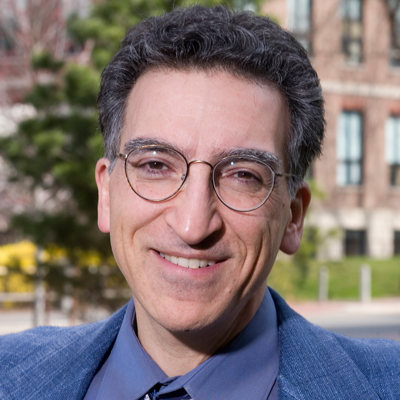Developing cost-effective storage solutions for intermittent renewable electricity
Finding the energy to power a civilization of about 10 billion people without destroying the environment is the greatest challenge facing humanity this century. Unlike many research opportunities, failure to solve this problem risks centuries of hardship for human civilization. Therefore, the work of Dr. Michael Aziz, of Harvard University, is of utmost importance.
The cost of solar and wind power has dropped so much that the greatest remaining obstacle to us getting the vast majority of our electricity from sunshine and wind is their intermittency. Dr. Aziz leads an interdisciplinary research team developing a promising battery storage technology for safely and cost-effectively storing enormous amounts of solar and wind-generated electricity. This will enable us to use them when we need them, rather than when Nature chooses to provide them. His team was recognized by Discover Magazine when their invention was listed among the top 100 stories of 2014. While massive worldwide deployment of clean energy technologies will take many decades, Dr. Aziz presses forward with the knowledge that, “if we wait to see how things go before really getting moving, we’re guaranteed to get there too late.”
Dr. Aziz’s work aims for both near-term and long-term impact on the energy-environment problem. In addition to his work with battery storage science and technology, Dr. Aziz has begun to work on a variety of other projects that may reduce the burden being placed upon our planet while aiding humanity in meeting its needs. Through research on some of the greatest technical obstacles in renewable energy and sustainability today, Dr. Aziz aims to make important contributions to solving the energy-environment problem.
Current research includes:
-
Battery Storage Technology: Dr. Aziz’s team is developing a battery storage technology in which energy is stored in inexpensive, abundant, non-toxic organic molecules found in nature. These are dissolved in water -- so they can’t catch fire -- and can be energized and then stored outside the battery container itself in arbitrarily large holding tanks for greatly reduced cost.
-
Material Stability: Radiation tolerance is important for electrical power plants that produce power by nuclear fission, as well as for future plants envisaged to produce power by nuclear fusion -- which, unlike fission, creates no radioactive products. Currently the problem of stability of an irradiated solid is a very difficult one to solve. Dr. Aziz studies the way that energetic particle irradiation affects the surfaces of materials in order to develop a way to predict which materials will be stable under which irradiation conditions.
-
New Semiconductors: Dr. Aziz is studying new semiconductors that can be made with ion bombardment and pulsed laser irradiation. These fabrication methods permit him and his team to make materials with atomic compositions that have not been made by any other method. They are studying and modifying these materials as possible candidates for ultra-high efficiency solar cells.
-
Removing Carbon Dioxide: Dr. Aziz is investigating how carbon dioxide might be removed from the atmosphere through the development of industrial processes to accelerate the earth’s natural process -- called chemical weathering -- to industrial rates. Currently the technology cost is too high and the market price of carbon dioxide emissions is too low for this to be economically viable, but his research aims to reduce technology costs for earlier viability if market conditions change.
Bio

Michael J. Aziz has been a member of the faculty at what is now the Harvard School of Engineering and Applied Sciences since he joined in 1986 and is now Gene and Tracy Sykes Professor of Materials and Energy Technologies. Aziz has made significant contributions to a number of fields in applied physics and materials science. Among his recent research interests are novel materials and processes for energy technology and greenhouse gas mitigation. He is co-inventor of the organic aqueous flow battery and directs a multi-investigator research program on stationary electrical energy storage. He is the Faculty Coordinator for Harvard's University-Wide Graduate Consortium on Energy and Environment, for which he developed a quantitative course on Energy Technology for a group of students in diverse disciplines. He is co-authoring a textbook, Introduction to Energy Technology: Depletable and Renewable to be published by Wiley-VCH.
For twenty years, Dr. Michael Aziz was motivated by basic research is materials science, content with the idea that -- eventually -- basic research pays off in benefits to society. When asked to teach thermodynamics -- the science of energy, energy conversion, and energy efficiency -- which is arguably the most difficult topic in the typical undergraduate engineering curriculum, he looked for a way to motivate his students to rise to the challenge presented by the intricacies of thermodynamics. In the process, he discovered the urgency of the energy-environment problem, which did more than motivate only his students. Rather than continuing only in the fundamental research he had been doing previously, he became motivated to take risks in initiating research that could help with the pressing problem our planet is facing.
Mike Aziz is an avid windsurfer -- a sport in which he harnesses renewable energy in search of the perfect “planing jibe.” In addition, he enjoys bicycling, as well as hiking in the mountains with his three children.
Website: http://aziz.seas.harvard.edu/
In the News
Dubbed “Methuselah”, new molecule outlives previous chemistries
Harvard News
Radio: Living on Earth, Public Radio International
Radio: Beyond Zero Energy, Melbourne Australia
Science Magazine
National Geographic
Renewable Energy Focus
New Electronics


